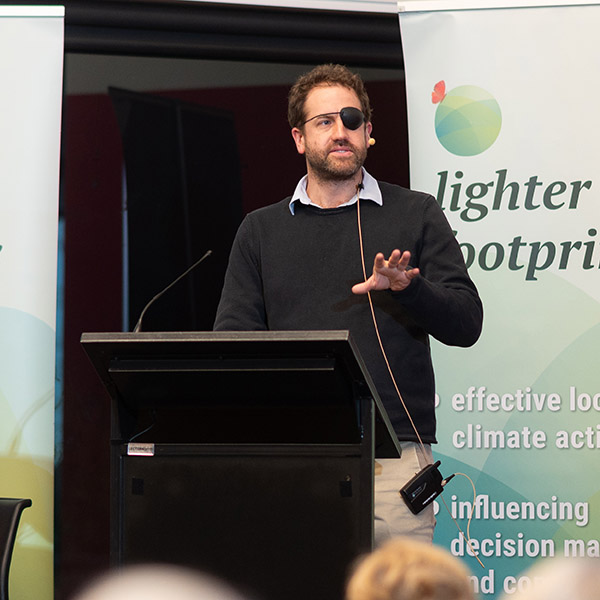Energy Policy: Facts and Fiction with Dr Dylan McConnell
In order to be strong advocates for the energy policy Australia needs to rapidly decarbonise the Lighter Footprints community seeks information from well credentialed experts.
On Wednesday 21st August we were fortunate to hear from Dr Dylan McConnell who is a renewable energy and energy systems researcher at UNSW Sydney. He has experience in analysing the electricity sector in Australia and specialises in operations research and optimisation.
So just the person to bring the audience up to speed on Australia’s electricity system. David Strang was then able to flesh out extra details after Dylan’s initial talk and coordinate questions from a knowledgeable audience.
Integrated System Plan (ISP)
Firstly we had to come to grips with the Integrated System Plan (ISP)
The ISP is a roadmap for the transition of the National Electricity Market (NEM) power system.
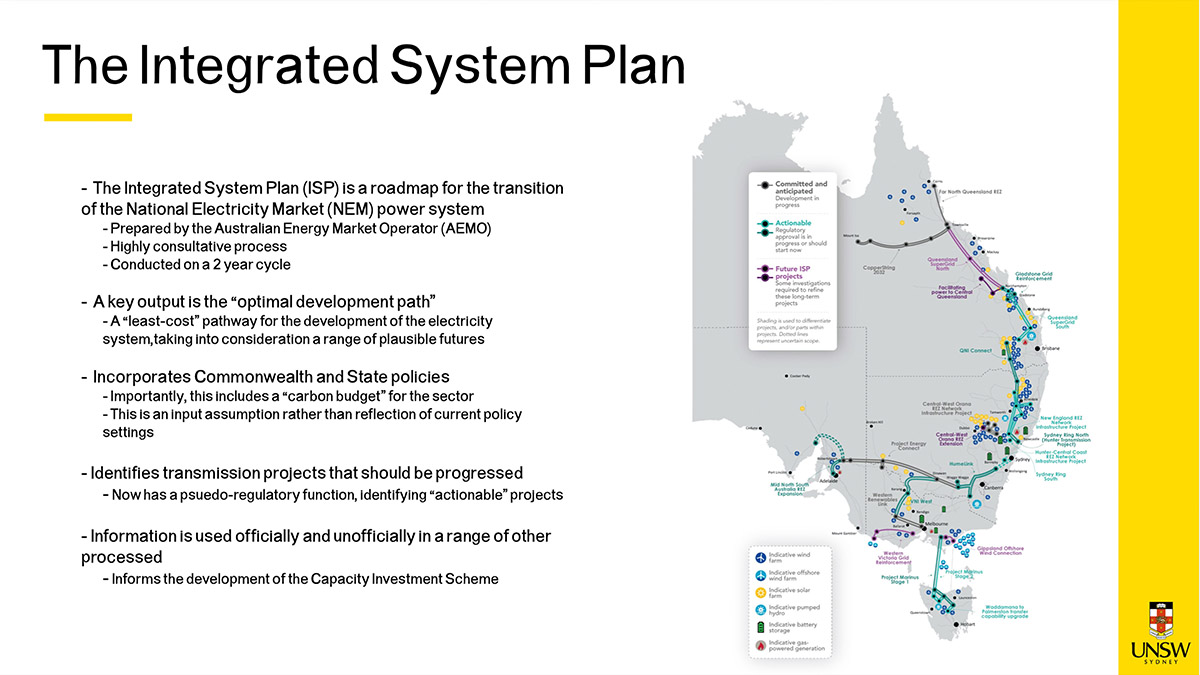
The Integrated System Plan is the result of wide industry and stakeholder consultation over two years and guides energy planning
The ISP is:
- Prepared by the Australian Energy Market Operator (AEMO)
- A highly consultative process with Federal/State governments and industry
- Conducted on a 2 year cycle
- Incorporates Federal and State policies
- Assumes a ‘carbon budget ‘ for the sector
- It identifies transmission projects that should be progressed
- Information from the ISP is used officially and unofficially in a range of other processes
- The ISP informs the development of the Capacity Investment Scheme
Optimal Development Path
A key output is the ‘optimal development path’ ( a least cost pathway for the development of the electricity system taking into consideration a range of plausible futures.)
The first ISP was developed in 2018. AEMO is now onto the fourth iteration. Dylan stated that the current ISP has not materially changed from the first ISP and that the current ISP is fundamentally very similar to the one prepared under the Coalition. He thinks it would be wrong for the current ISP to be categorised as a Labor plan. Overall he thinks that the current ISP whilst not perfect is “pretty bloody good”.
“Governments have set 2050 as the target for a net zero economy, with each jurisdiction having interim emissions and renewable energy targets to meet that deadline. Federal Government policy is a 43% reduction in 2005-level emissions by 2030, with 82% of electricity supplied from renewable sources.”
ISP 2024
Dylan thinks the next of iteration of the ISP will involve more planning for demand management of the power supply.
“This energy transition, well underway, is by far the biggest transformation of the National Electricity Market (NEM) since it was formed 25 years ago.
As well as the shift from coal to firmed renewables and low emissions sources, it will treble capacity to meet future demand, and facilitate a two-way flow of electricity across the networks.”
ISP 2024
The ISP has to plan for different rates of Australia’s progress on the pathway to decarbonisation and different rates of growth in industrial decarbonisation and low emission energy exports.
Scenario Planning
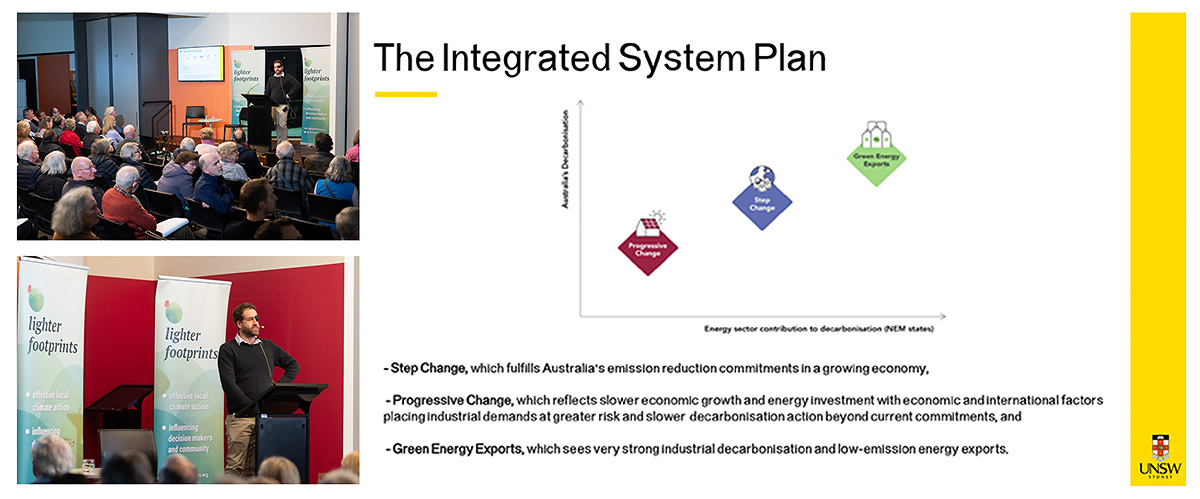
The ISP now runs three models with the middle version Step Change judged to be the likely
There are three different scenarios modelled to reflect the different possible futures:
- Step change
- Progressive change
- Green energy exports
Dylan showed us a series of slides detailing the changes in our energy system if Australia follows the ‘step change scenario’
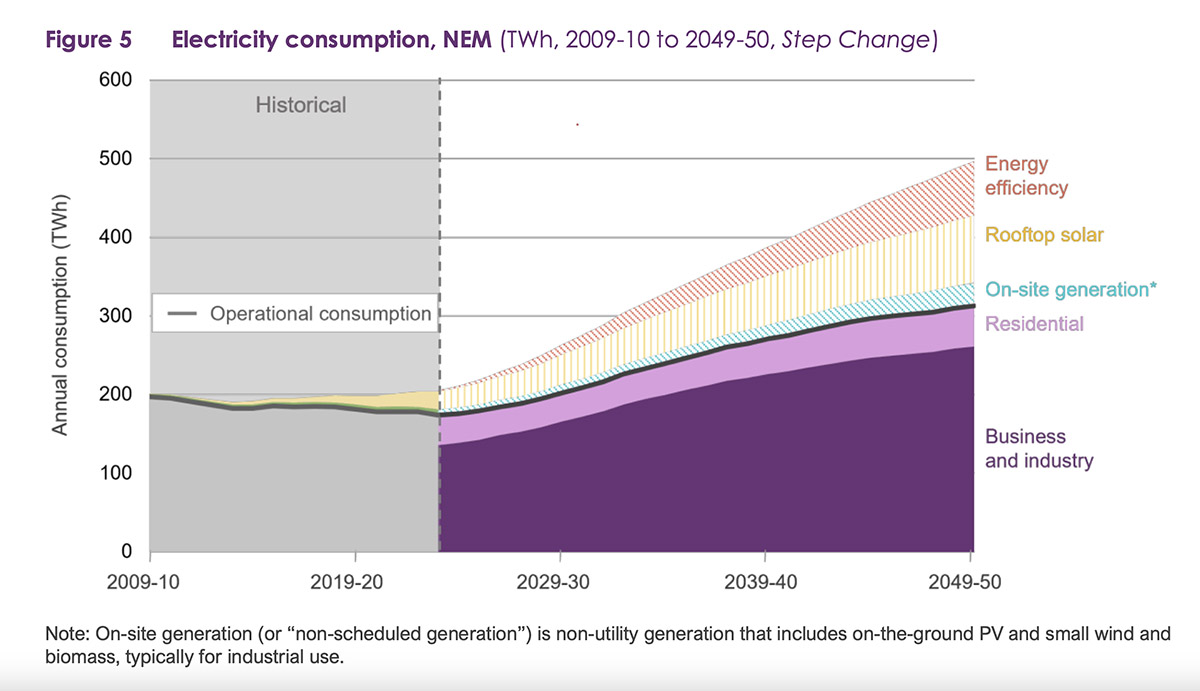
Households are going to play an important role in the transition with energy efficiency and self generation
The audience became more familiar with the following bits and pieces of Australia’s power system
- Storage capacity (batteries, virtual power plants and pumped hydro)
- Grid scale wind and solar
- Distributed solar pv rooftop solar)
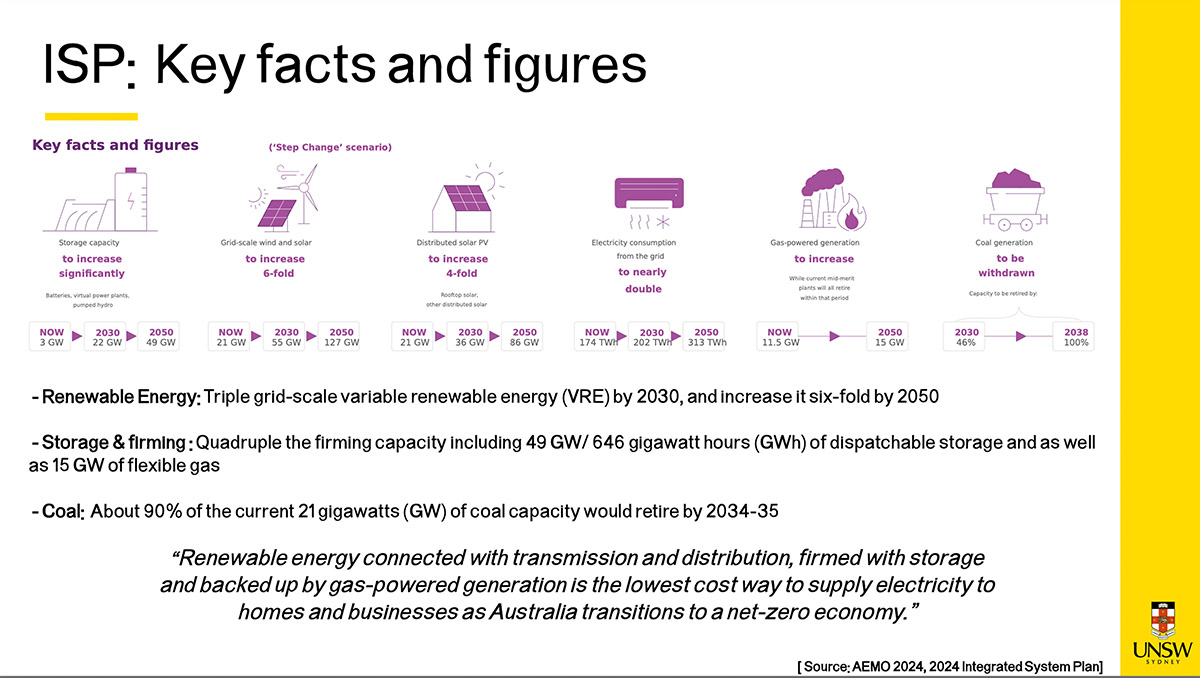
The ISP offers detailed set of transition pathways to optimise transitioning our energy sytems to clean energy including transmission and distributed energy systems
ISP Conclusion
“Renewable energy connected with transmission and distribution, firmed with storage and backed up by gas-powered generation is the lowest cost way to supply electricity to homes and businesses as Australia transitions to a net-zero economy.”
Source: AEMO 2024, 2024 Integrated System Plan
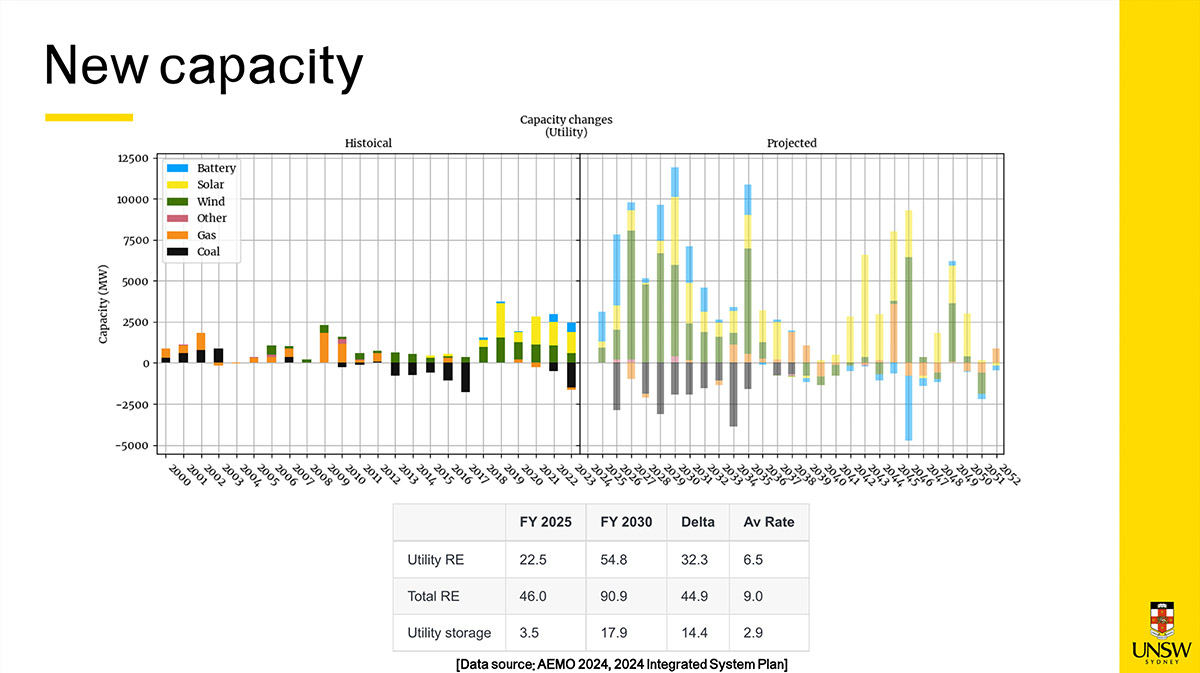
The ISP plan details large additions in wind generation and solar through to 2033, with a significant proportion of non utility scale generation
But at present we are not installing enough renewable energy to be on track for the ISP ‘step change’ scenario.
The ISP 2024 Executive Summary notes a variety of risks to the optimum development pathway including delays in the planning process, difficulties with social licence, cost pressures and supply chain issues, risks that markets power systems are not ready for high renewables penetration, and risks that consumers are not prepared and supported for coordination of consumer generation and storage resources into the market.
The ISP details large benefits from the optimum development pathway including guiding $16bn of transmission and $142bn of capital for electricity infrastructure “to grown and sustain Australia’s $2 trillion annual economy”.
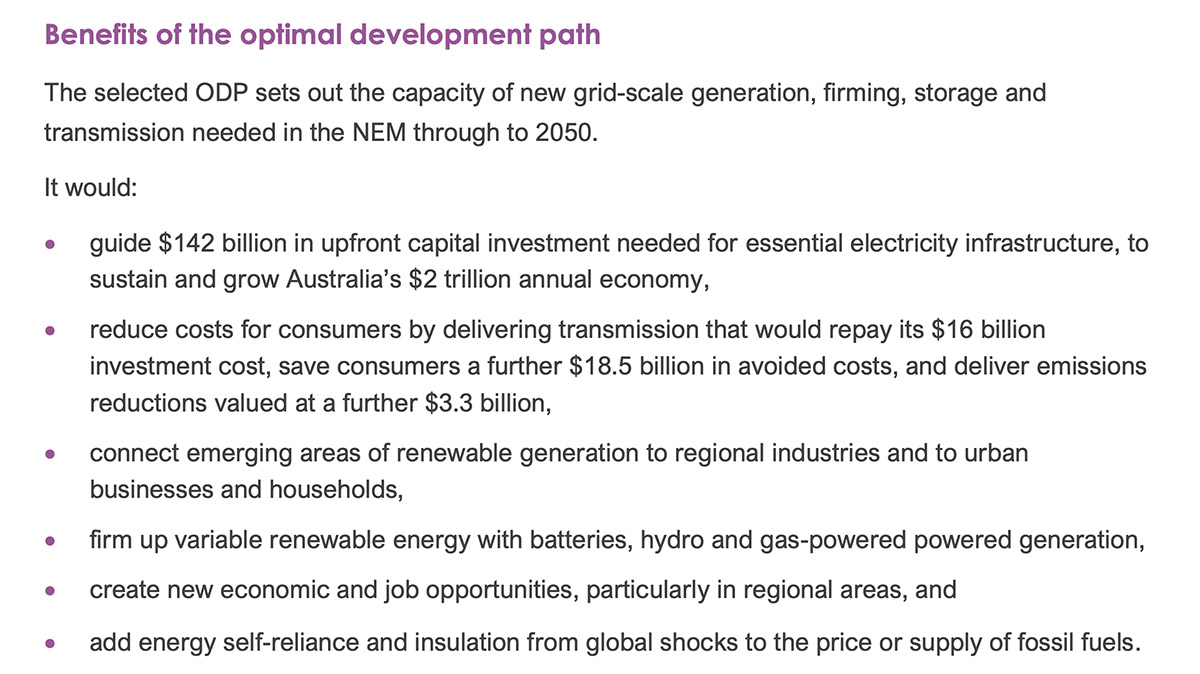
Getting the planning right of additional generation, storage and transmission assets will deliver large benefits to the Australian economy and communities according to the ISP
Dunkelflaute
Then there is Dunkelflaute : dark wind lulls or the sun not shining and the wind not blowing
Whilst challenging there are many solutions.
- Supply side solutions generally involve low capex, high opex technologies.
- Currently solved by fossil fuel gas generation, but does not have to be fossil gas and would be expected to generate just at below 5 % utilisation rates.
Gas supply
So do we have enough gas ?
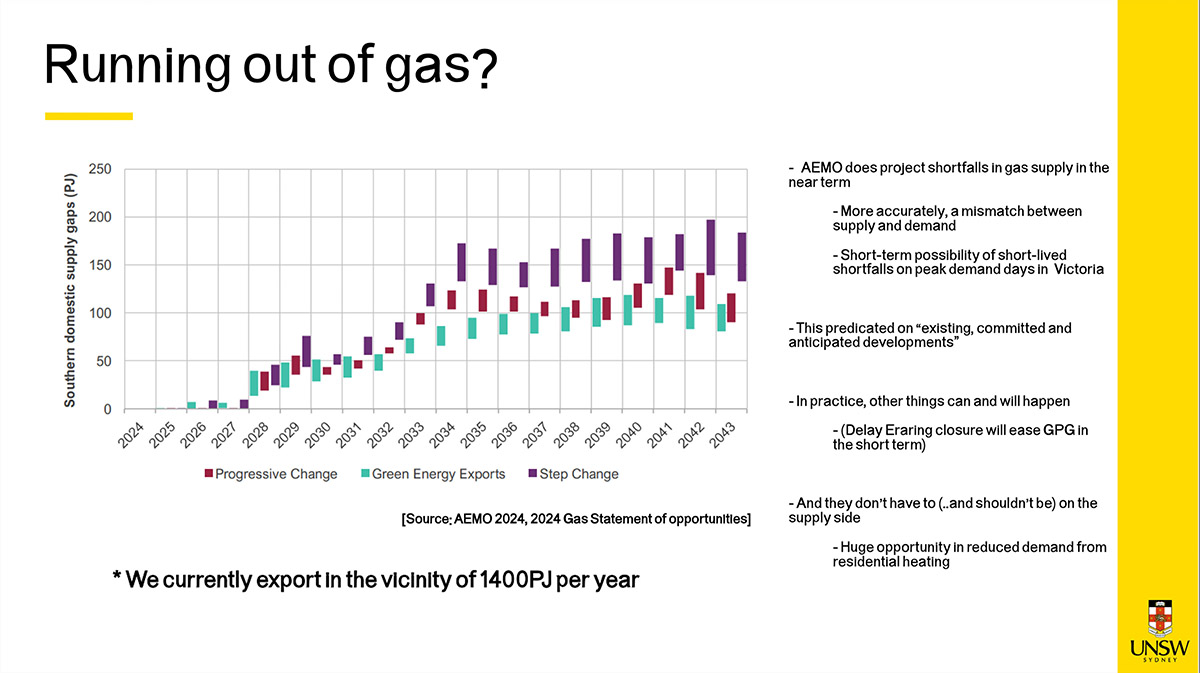
Given our massive gas exports Australia doesn’t have a gas supply failure, rather a market failure
Dylan said:
- AEMO does project shortfalls in gas supply in the near term
- More accurately, a mismatch between supply and demand
- Short term possibility of short -lived shortfalls on peak demand days in Victoria
- This is predicated on”existing committed and anticipated developments’
- In practice other things can and will happen
- In Victoria there is a huge opportunity to reduce the demand of gas by getting off gas for domestic heating.
- Projections do suggest we need more dispatchable capacity. But not in the short term, and it might not be (fossil) gas!
Nuclear Power
What about nuclear power?
Nuclear power is extremely expensive and not available on relevant timelines
- From announcement to finished construction 20 + years and that is in countries with established nuclear power industries
- Meantime a lot of old coal power plants will be closing
It is challenging to add nuclear in a renewable dominated system as not suited to making up power shortfalls in renewable energy supply when “dunkleflaute” conditions.
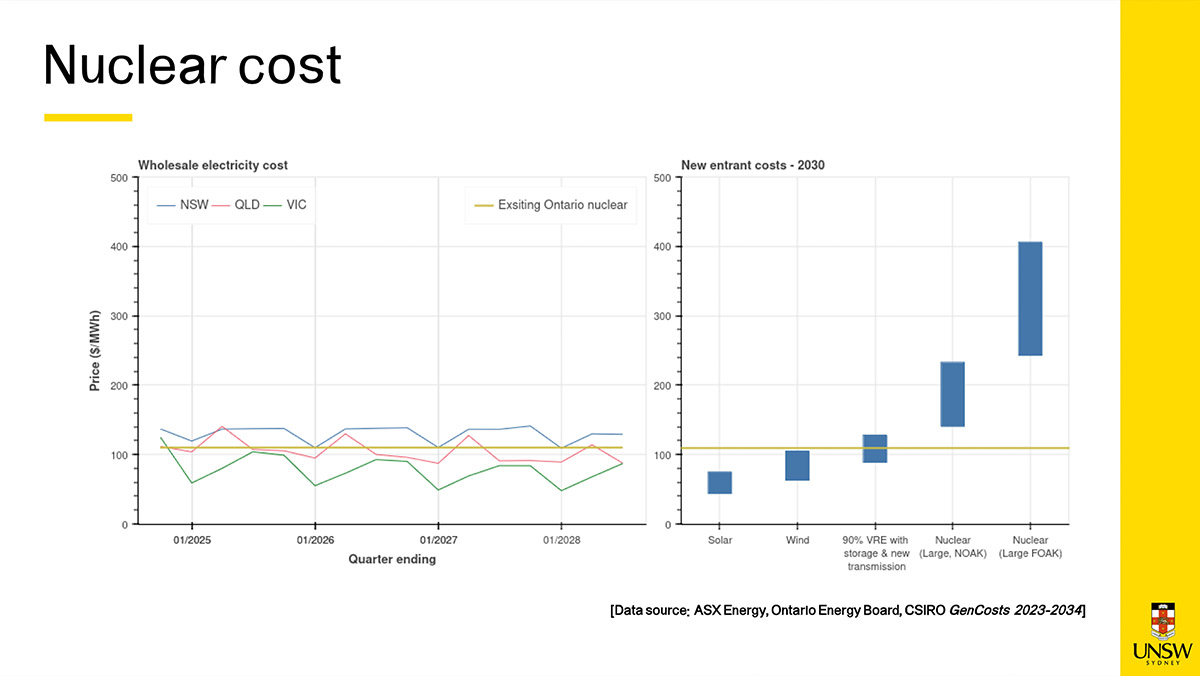
Although the ISP doesnt include nuclear the 23:24 Gen Cost report puts it at least 5-6x the cost of firmed renewables with transmission
Adding nuclear is likely to displace new renewables and prolong the life of coal and gas
Potentially there would be increased emissions whilst coal and gas generation of electricity continues until nuclear stations constructed and operating.
There would be more risk and uncertainties for investment in renewable energy project construction.
AEMO has not modelled nuclear power as it is currently illegal in Australia.
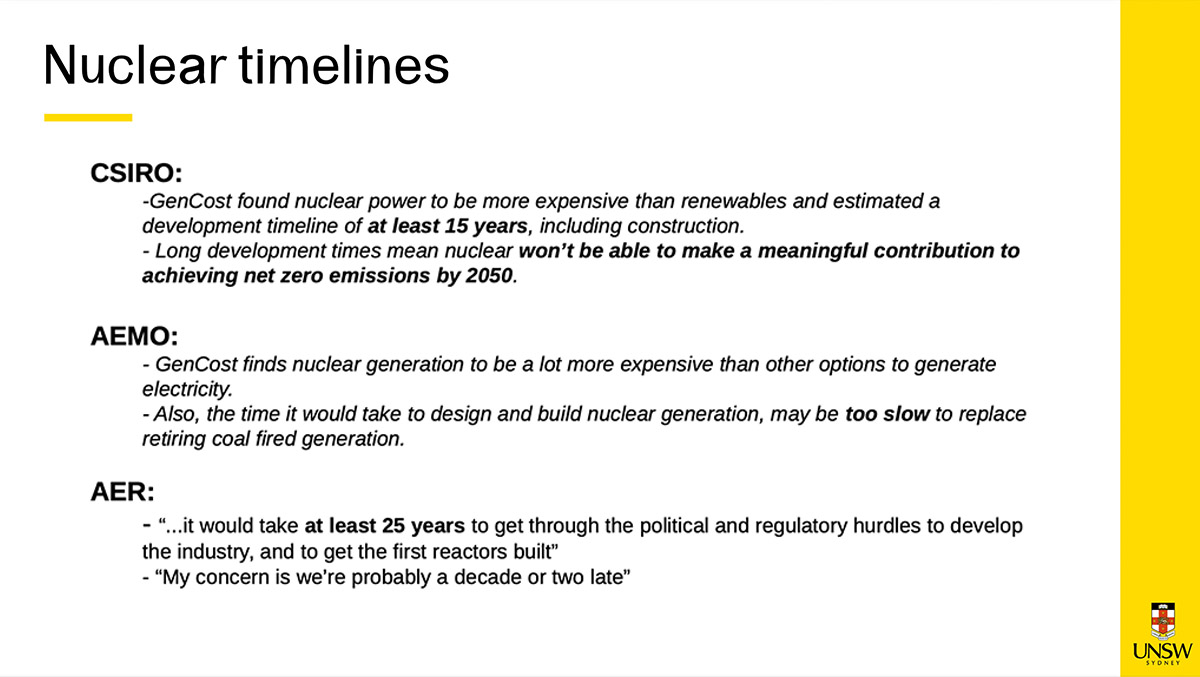
The considerable regulatory hurdles, high cost, inflexibility of supply and very extended timetables make nuclear unattractive
Carbon Capture and Storage
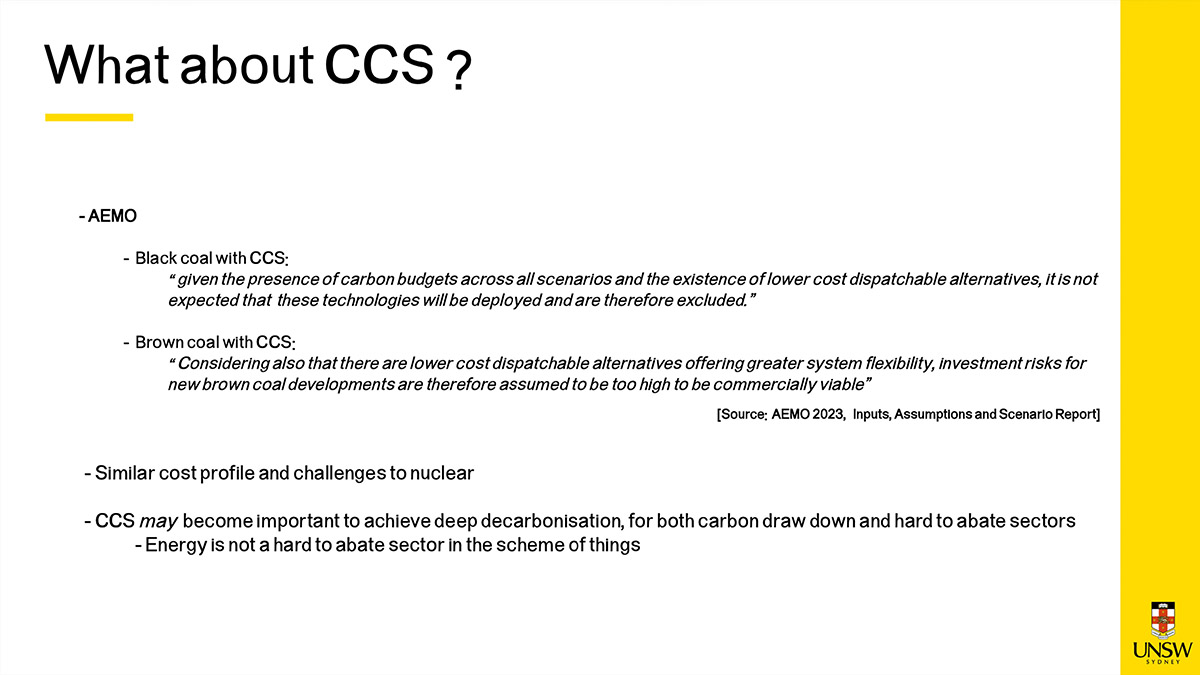
Globally CCS has been a failure and not lived up to expectationss – CCUS where the CO2 is redeployed to increase oil production only increases emissions
AEMO notes for black coal with CCS: “given the presence of carbon budgets across all scenarios and the existence of lower cost dispatchable alternatives, it is not expected that these technologies will be deployed and are therefore excluded.”
Considering also that there are lower cost dispatchable alternatives offering greater system flexibility, investment risks for new brown coal developments are therefore assumed to be too high to be commercially viable”
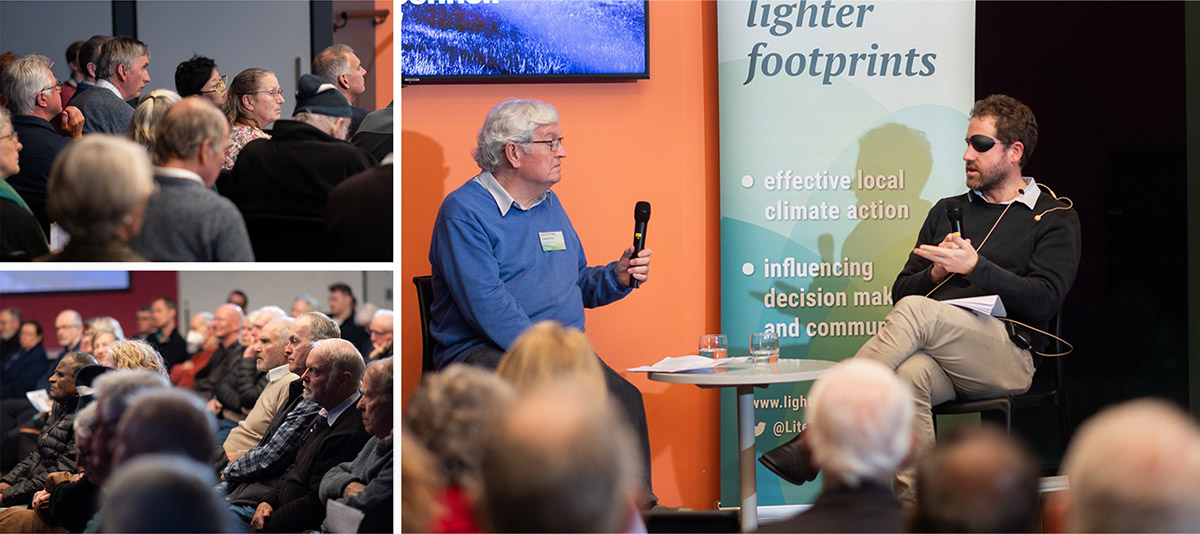
David Strang, Convenor of the Energy Transition Group talking with Dr Dylan McConnell and then taking audience questions
Firmed renewables with energy efficiency measures and demand management
The take home message is the least expensive source of zero emission energy is renewable energy for Australia, coupled with adopting energy efficiency measures and demand management.
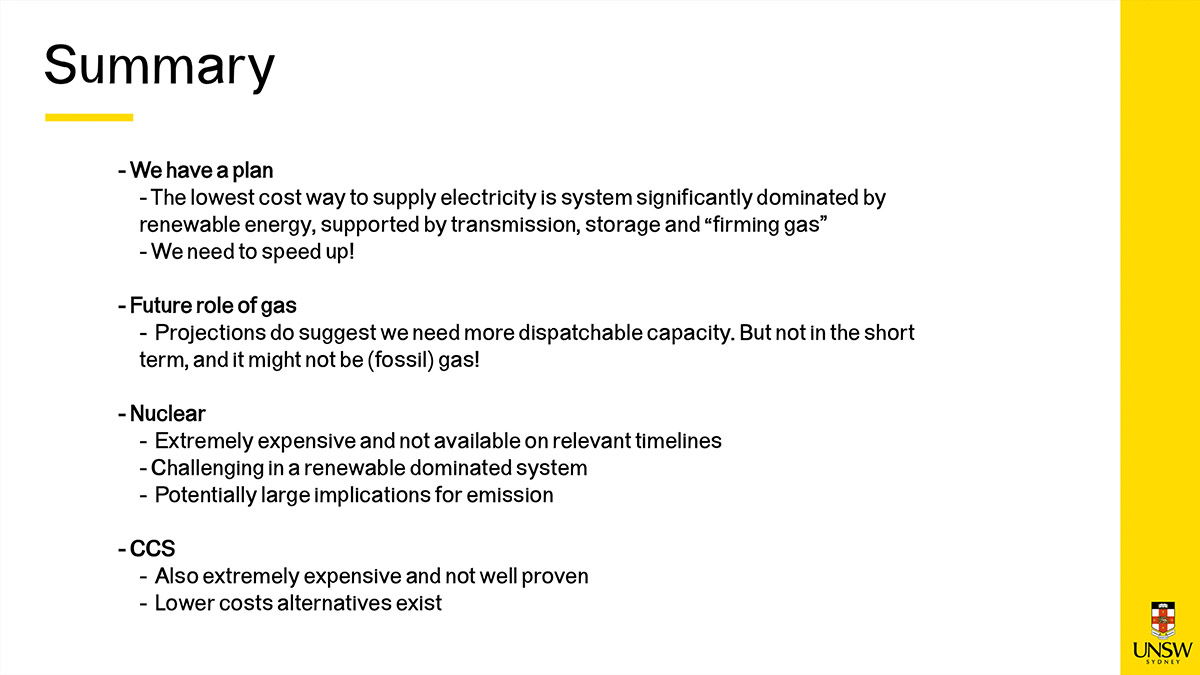
Dr Dylan McConnell concludes by reiterating the ISP conclusion that moving to firmed renewables with appropriate transmission is the least cost and most beneficial pathway

